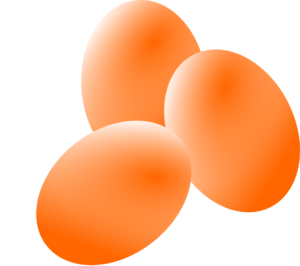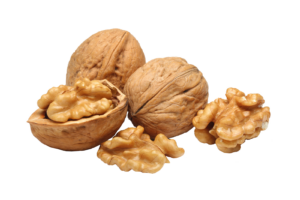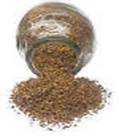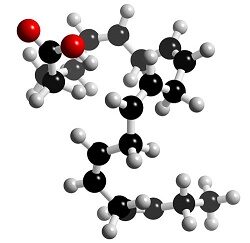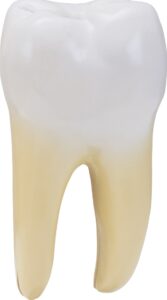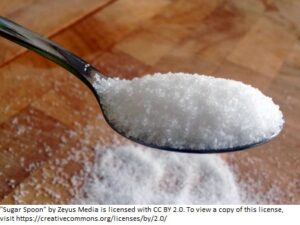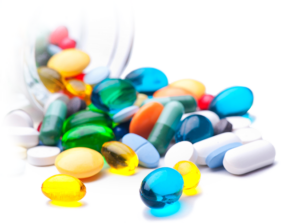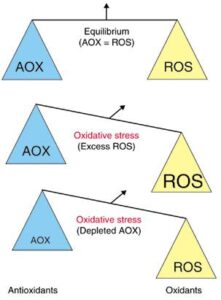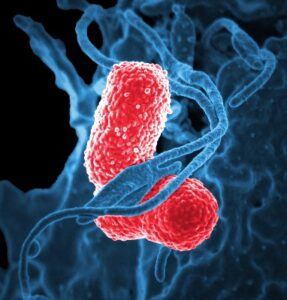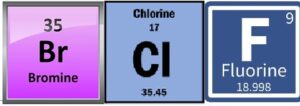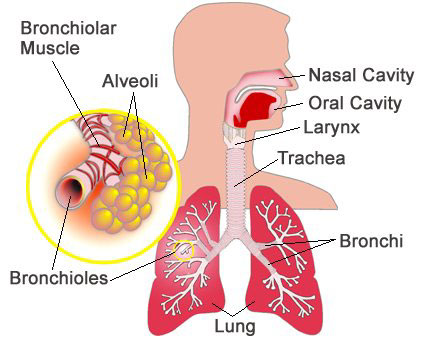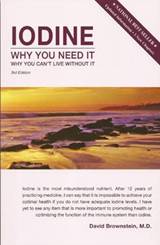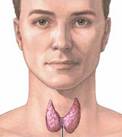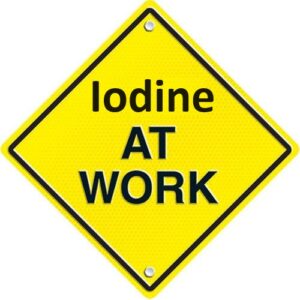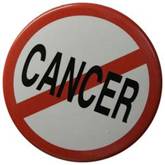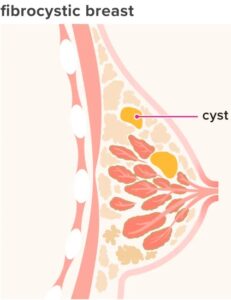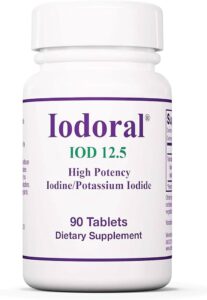
Side effects of iodine supplementation

Possible symptoms of iodine supplementaion
- Body warms up. Iodine speeds up metabolism, which can produce extra heat.
- Iodism. Dose-related; symptoms are unpleasant brassy taste, increased salivation, head cold, sneezing, and headache originating in the frontal sinuses. Dr. Guy Abraham and Dr. Jorge Flechas maintain that there has been no iodism observed at the 12.5mg/day dosage. Symptoms disappear spontaneously within a few days after stopping iodine supplementation.
- Bromine detoxification. If bromine is eliminated quickly there will be symptoms such as cloudy, sediment-filled urine, body odor, rashes and extreme fatigue.1/2 tsp. of sea salt /day in water is recommended, as the bromine will follow the sodium out of the body, relieving symptoms more quickly. Also taking about 5g Vitamin C / day aids detoxification. (but don’t take within 2 hours of taking iodine, or effects of iodine will be neutralized)
- Iodine Induced Hyperthyroidism (IHH) occurs predominately in iodine-deficient persons during the early period of iodine supplementation. The use of iodine in a previously iodine-deficient population may result in a TRANSIENT INCREASE in thyroid hormones…Studies have shown that the increase in thyroid hormones, which could lead to hyperthyroid symptoms (palpitations, nervousness), will gradually decrease. The possible reason is identified in the 8th edition of Werner and Ingbar’s The Thyroid, published in 2000: “. . . iodine deficiency increases thyrocyte proliferation and mutation rates. Possible consequences are the development of hyperfunctioning autonomous nodules in the thyroid … and hyperthyroidism after iodine supplementation. Therefore, IIH is an IDD (Iodine Deficiency Disorder).”
- Iodine-induced goiter (IIG) / hypothyroidism. When animals or humans that are iodine deficient are given large doses of iodine, there is a TRANSIENT DECREASE in thyroid hormone production (approx. 26-40 hrs.) until the body reestablishes it’s equilibrium with iodine. After that, thyroid levels adjust to normal and signs of hypothyroid do not develop.
| Significant decrease in serum thyroxine (T4) with the absence of significant changes in the mean values for TSH, FT3 and FT4 (following supplementation at 12.5 mg/day),could be due to either: (1) a decreased secretion of T4 by the thyroid gland Or (2) lower levels of thyroxine-binding globulin (TBG). The synthesis of TBG occurs in the liver and this synthesis is stimulated by estrogens  Robbins et al, 1978 In the female rat, iodine / iodide deficiency increases the sensitivity of mammary tissue to estrogens. Eskin et al, 1967 Iodine / iodide supplementation to these female rats in amounts equivalent, based on body weight, to amounts of iodine/iodide required in women with fibrocystic breasts for subjective and objective improvement of fibrocystic breasts, (Ghent et al, 1993) had an attenuating effect on estrogen stimulation of the mammary tissue in those female rats, decreasing their response to estrogens. Therefore, the decreased T4 levels following iodine supplementation could be due to a similar mechanism on hepatic synthesis of TBG, by decreasing the sensitivity of hepatic receptors to estrogens, resulting in decreased synthesis and release of TBG by the liver and decreased T4 levels. |
Iodine and Vitamin D Connection
There seems to be a connection between bringing sufficient iodine to a bromine-plugged thyroid, and the vitamin D metabolism of the body. The calcitonin / parathyroid hormone / Vitamin D / calcium balance in the body changes as people on iodine-loading programs often register as vitamin D deficient when they did not previously. When people are given calcitonin as part of an osteoporosis program one of the side effects mentioned is a “flushing sensation of the skin”. Dr. Brice Vickery relates, “I have had two iodine-loading , high bromine patients who during the lowering of their bromine levels registered as iodine deficient and mentioned “a sunburn flushed feeling on the skin of their faces, arms and back”. This flushing disappeared with vitamin D3 supplementation at 2000 IU daily for a limited period of time”.
Iodine Allergy. Includes a rash, fatigue, congestion, headache and a fever. One person reported online that he was “violently allergic to iodine taken internally (rashes, swelling and, finally, hemorrhaging) but, so far, after using it on the skin for upwards of two years, no reactions whatsoever have appeared“. Dr Brownstein reports that an allergy to inorganic iodine / iodide (Lugol’s or Iodoral) is rare. Dr. Brownstein’s book – Iodine: Why You Need It, Why You Can’t Live Without it.Dr. Jorge Flechas reports that < ½% of the population is iodine sensitive
Thyroid cancer is NOT a likely side-effect of iodine supplementation
Dr. David Brownstein states, “There have been some reports in the literature that iodine supplementation can be associated with an increased incidence of thyroid papillary cancer. If iodine usage were the cause of thyroid cancer, then falling iodine levels would be expected to lead to lowered thyroid cancer levels. However, this has not been the case. During the last several decades, when iodine levels have DECLINED, the incidence of thyroid cancer has markedly INCREASED”. (Dr. Brownstein’s book – Iodine: Why You Need It, Why You Can’t Live Without it).
References
Eskin B., Bartuska D., Dunn M., Jacob G., Dratman M. (1967) Mammary Gland Dysplasia in Iodine Deficiency, JAMA, 200:115-119.
Ghent, W., Eskin, B., Low, D., Hill, L.(1993) Iodine Replacement in Fibrocystic Disease of the Breast, Can. J. Surg., 36:453-460.
Robbins J et al (1978) Thyroxine transport proteins of plasma: molecular properties and biosynthesis, Recent Prog Horm Res.












